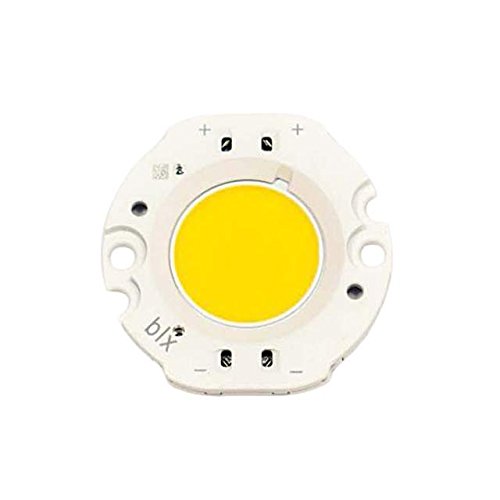Bridgelux and Cree both offer LED lights designed for reef aquariums to help promote the health and growth of tank corals and anemones. Bridgelux is usually a less expensive but lower quality product than Cree.
In this article, we will discuss the differences between Bridgelux and Cree as well as the pros and cons of each. Additionally, we will cover whether or not Bridgelux LEDs are any good, if Cree makes UV LEDs, and what Cree LED technology is.
What Are the Differences Between Bridgelux LED and Cree?
Both Bridgelux and Cree offer LED lights that help your reef tank establish a good light regimen, especially for corals and anemones whose zooxanthellae need light in order to thrive. There are a few differences between the two brands, however.
Bridgelux is priced cheaper than Cree and is available in a range of different LED bulb colors. This is a great option if you are just starting out in the aquarium hobby. You can experiment to see which one works best for your setup without spending a lot of money.
Cree is more expensive, but much more efficient than Bridgelux. Their LED light delivery system is designed to be top of the line, shing brighter and lasting longer than the comparable model of Bridgelux.
What Are the Pros and Cons of Bridgelux LED?
There are pros and cons to every option of aquarium light including Bridgelux. The biggest advantage to using Bridgelux LED lights is their available range of colors. Bridgelux offers lights within the violet, cyan, and deep red spectrums that can be very beneficial to corals.
Another advantage to Bridgelux lighting is that they are half the cost of Cree LED lights. With such low prices, you could buy multiple lights and see which one works best.
A disadvantage of Bridgelux is that it is less efficient than Cree LED lights, with up to 25% less output than Cree. This is because Bridgelux lights are at a lower current and voltage and has fewer phosphors than Cree’s LED lights. Overall, Bridgelux LED is a good investment for your aquarium especially if you are just starting out.
What Are the Pros and Cons of Cree?
The biggest advantage to choosing Cree LED lights over Bridgelux is the efficiency they provide. Cree LED lights can be up to 30% more efficient at delivering the correct amount and exact spectrum of light as advertised. If you need a white or blue light, Cree has the best lights on the market.
Another advantage to selecting Cree lights for your aquarium is the long lifespan. Cree lights will last a lot longer than Bridgelux.
There are some disadvantages to choosing Cree lights, however. The biggest problem with Cree lights is their price. They tend to cost upwards of 70% more than Bridgelux lights. While some people may consider that the quality is worth the price, others may just purchase multiple Bridgelux lights for the same price as a Cree.
Are Bridgelux LEDs Any Good?
Even though Bridgelux LED lights are not as efficient or high quality as Cree LEDs, they are still an exceptional lighting system to add to your aquarium. You have a wide range of colors to choose from to optimize the growth of your corals, anemones, and aquatic vegetation. They are also more cost effective than Cree lights.
They may not last as long as Cree light, but they are still extremely reliable. Those who use Bridgelux lights for their aquarium tanks state that these lights are worth what you pay for them. They are a good investment and easily replaceable once they burn out.
Bridgelux also makes their lights in a convenient strip setup that is perfect for installation for an aquarium. They are easy to turn on and off – you won’t regret choosing Bridgelux lights for your aquarium tank.
Does Cree Make UV LEDs?
Cree claims that its regular LED lights do not emit any ultraviolet rays, however, they do make specially designed UV LED lights for aquariums. These LEDs are usually in the purple spectrum but are equipped with ultraviolet capacity to aid in sterilizing your aquarium tank.
Cree’s designed UV LED lights are made so that you can provide an adequate light source for your photosynthetic tank inhabitants such as coral, anemones, and aquatic plants, to establish a light cycle for your fish, and to help kill unwanted parasites, bacteria, and microalgae.
Most of Cree’s UV LED lights are equipped with different settings so that you can control the amount of ultraviolet light in your tank without having to compromise on the concentration of LED your tank receives.
What Is Cree LED Technology?
Since Cree’s inception as a company in the late 1980s, it has revolutionized the LED lighting industry with its innovative technology. Cree was the first to patent a blue LED light and uses silicon carbide to design and create its LED lighting products.
Cree also paved the way for waterproofing LED lights which were first used for phone screens but also became applicable to aquarium lights. While aquarium lights do not go in the water, they are exposed to and reside very close to the water, so it is important to have protection for the lights and the inhabitants of the tank.
Cree continues to produce high quality LED lights with precise brightness and color consistency so what you see is what you get.
Conclusion
Bridgelux and Cree are two of the leading brands that produce LED lights for aquarium use. Both are excellent selections; however, they are advantages and disadvantages to each. Bridgelux lights offer more options on the color spectrum and are almost half the cost of Cree lights.
On the other hand, Cree LED lights last longer and are more efficient at delivering precise light levels than Bridgelux lights. Whether you choose quality over cost or vice versa, both Bridgelux and Cree provide outstanding products that will help your aquarium inhabitants thrive for a long time to come.



